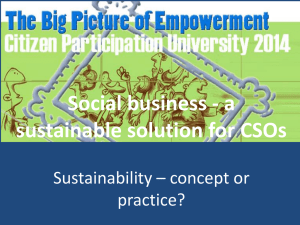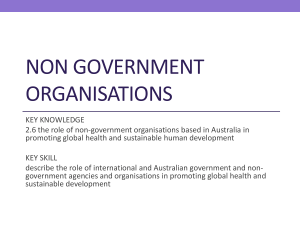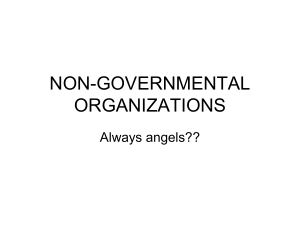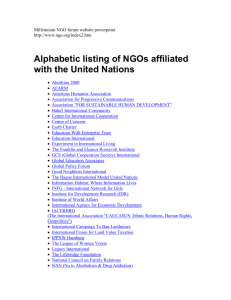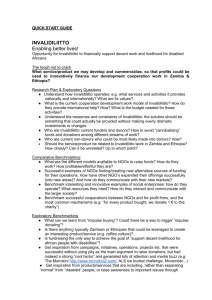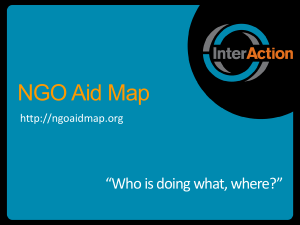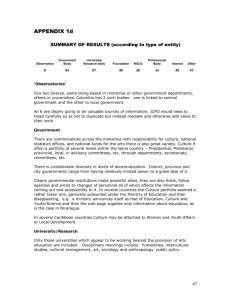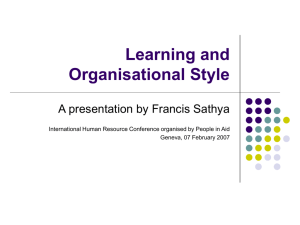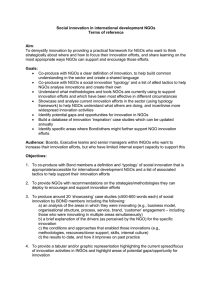What is a NGO?
advertisement
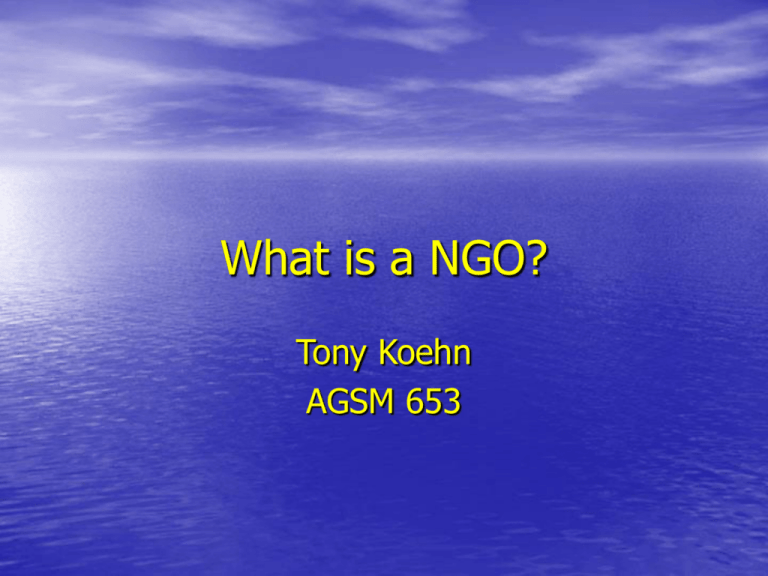
What is a NGO? Tony Koehn AGSM 653 Definition In a broadest sense: • Not based on government • Non profit making Can vary depending on function: In U.S.: Private Voluntary Organizations In Africa: Voluntary Development Organizations Definition – World Bank “The diversity of NGOs strains any simple definition. They include many groups and institutions that are entirely or largely independent of government and that have primarily humanitarian or cooperative rather than commercial objectives. They are private agencies in industrial countries that support international development; indigenous groups organized regionally or nationally; and member-groups in villages. NGOs include charitable and religious associations that mobilize private funds for development, distribute food and family planning services and promote community organization. They also include independent cooperatives, community associations, water-user societies, women’s groups and pastoral associations. Citizen groups that raise awareness and influence policy are also NGOs” Definition – cont’d Impossible to give one unique answer, but NGOs have following characteristics: 1. Engaging in suffering relief activities 2. Promoting interest of the poor 3. Protecting the environment 4. Providing basic social services 5. Advocating community development Typology Orientation: 1. Charitable: Needs of the poor/disaster relief (Feed the Hungry, Red Cross) 2. Service: Provision of health, family planning or education (Planned Parenthood) 3. Participatory: Self-help project with local people involvement (Habitat for Humanity) 4. Empowering: Help poor people develop a clearer understanding of social, political, and economic factors (Amnesty International) Typology – cont’d Level of operation: 1. Community-based organizations 2. Citywide organizations 3. National NGOs 4. International NGOs Typology – cont’d Key Issues: 1. Environment 2. Labor Standard 3. Poverty 4. Globalization 5. Animal Rights NGO facts 1. Began in 1800s as catalyst for social reform 2. 3. (Red Cross – 1859, Save the Children Fund after WWI) Huge Growth in 1990’s (International NGOs: 1988- 8579 1996- 23,135 UIA data). Growth in membership (Worldwide Fund for Nature: 2000- @5.7 million members 1985570,000) Varying size (1 person to thousands) NGO facts – cont’d • Forest Stewardship Council: 15 full-time employees, 7 years old, leading certifier in forest products (year 2000 data) • Green Peace: In 1991, nearly 3 million members, offices in 32 countries, budget of $146 million, established in 1971 • Effectiveness regardless of size: RAN & Chiquita Forest Stewardship Council & Home Depot Role of NGOs in globalizing world Per Boutros-Ghali in 1995 “ Non-governmental organizations are a basic element in the representation of the modern world. And their participation in international organizations is in a way a guarantee of the latter’s political legitimacy…From the stand point of global democratization, we need the participation of international public opinion and the mobilizing powers of non-governmental organizations.” Role of NGOs – cont’d 1. Increasing role in development • From relief services (logistics management) to development services (strategic management) 2. Creating a smaller, more interdependent, global community • Internet: Bring forth issues to many Check these out! List of NGOs: www.etown.edu/vl/ngos.html Union of International Associations: www.uia.org/uiafaqs/faqorg.htm#NGO Textile activist: www.cleanclothes.org Definition of an NGO: www.undp.org/ppp/library/files/maslyu01.html Academics Studying Nike: http://cbae.nmsu.edu/~dboje/nike/nikemain1.html


